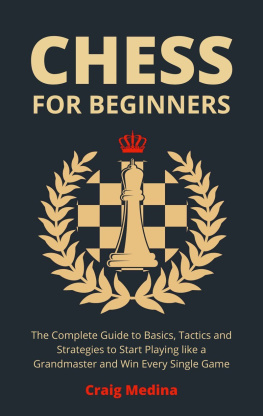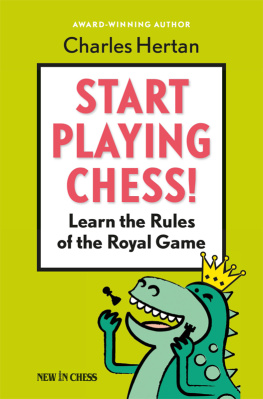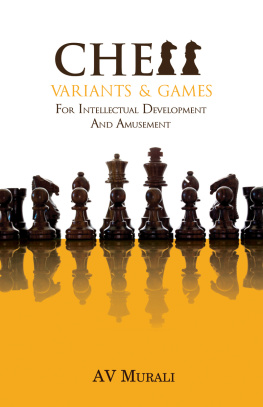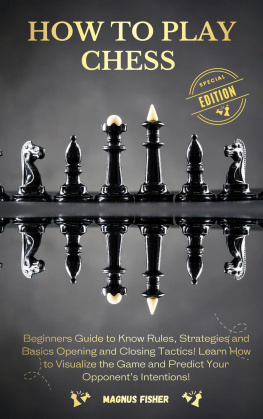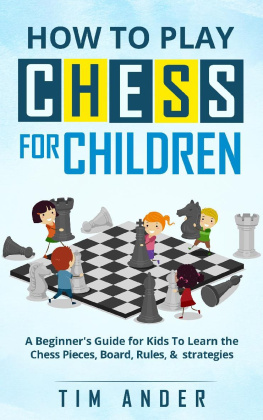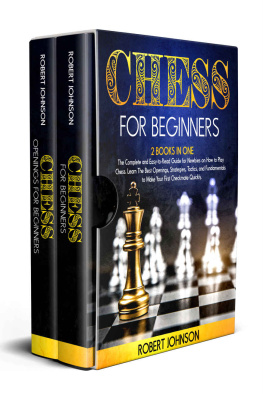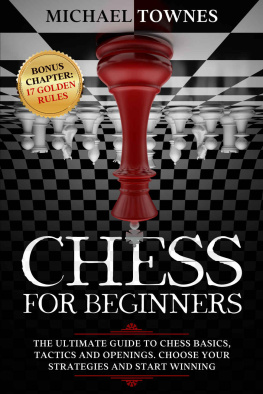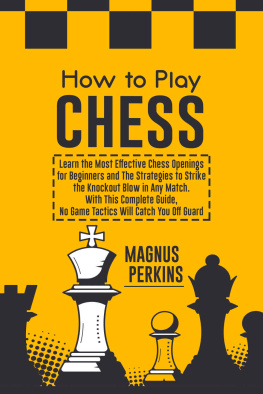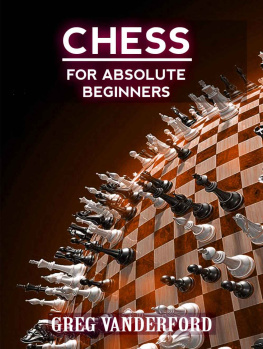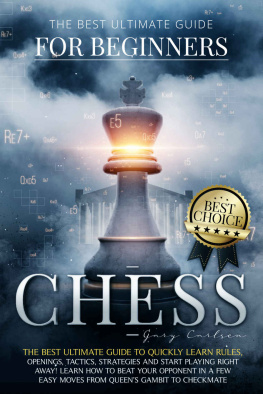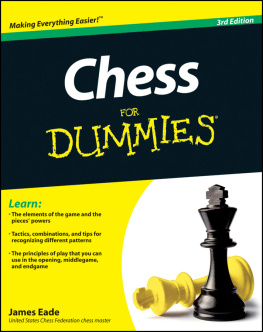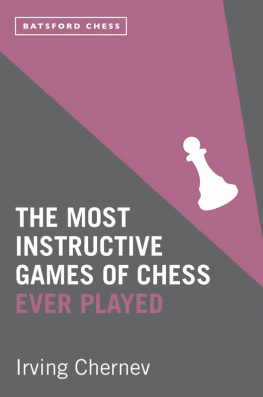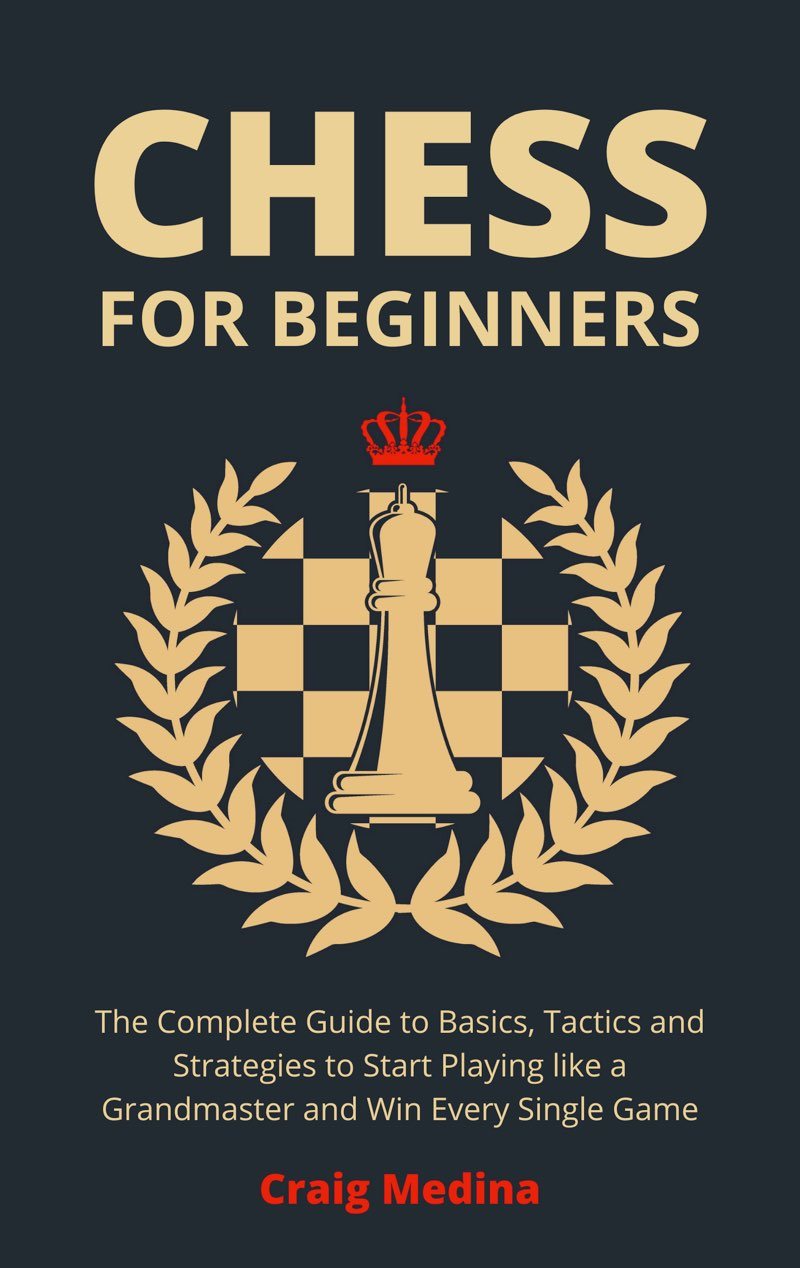for Beginners
The Complete Guide to Basics, Tactics and Strategies to Start Playing like a Grandmaster and Win Every Single Game.
Craig Medina
The Book Public
Contents
Copyright 2021 - All rights reserved.
The content contained within this book may not be reproduced, duplicated or transmitted without direct written permission from the author or the publisher.
Under no circumstances will any blame or legal responsibility be held against the publisher, or author, for any damages, reparation, or monetary loss due to the information contained within this book, either directly or indirectly.
Legal Notice:
This book is copyright protected. It is only for personal use. You cannot amend, distribute, sell, use, quote or paraphrase any part, or the content within this book, without the consent of the author or publisher.
Disclaimer Notice:
Please note the information contained within this document is for educational and entertainment purposes only. All effort has been executed to present accurate, up to date, reliable, complete information. No warranties of any kind are declared or implied. Readers acknowledge that the author is not engaged in the rendering of legal, financial, medical or professional advice. The content within this book has been derived from various sources. Please consult a licensed professional before attempting any techniques outlined in this book.
By reading this document, the reader agrees that under no circumstances is the author responsible for any losses, direct or indirect, that are incurred as a result of the use of the information contained within this document, including, but not limited to, errors, omissions, or inaccuracies.
Introduction
Welcome to Chess for Beginners! Inside this book is all of the information that you could possibly need about the wonderful game of chess as a new player, from where the game originates from, all the way through to strategies and tips that you can use as a beginner to play chess well.
After all, like any game, chess is much more fun when you are winning all of the time!
Firstly, I will take you through the origins of chess. While many people are aware that chess is a game that has been passed down from generation to generation, very few are aware of where the game actually originated from or when chess was created. I will also touch on modern competitive chess as a concept and how chess went from being a game played as a hobby by the elite classes to the competitive sport we know and love today.
As part of this section, I will also shine a light on some of the most prolific chess players of all time.
We will then look at how algebraic notation is used to track moves in a chess match. Without any knowledge, this topic can seem quite daunting. However, once you have read through this simple guide, you will be able to pick it up very quickly.
I will also take this opportunity to explain each of the pieces in more detail and how they can move around the chess board. This information is vital in chess for executing strategies and predicting your opponents next move.
Next up, we will look deeper into the games specific rules, most importantly the special chess rules and moves that you should know. Capturing pieces and winning chess games is normally common knowledge, even for newer players, but many players are not aware of some of the more intricate moves that you can play, such as the en passant or castling your King.
I will also discuss the different ways that a chess game can end in a draw, which can help you get out of situations where you may otherwise have lost, and go into more detail about the different moves that can be made to get an opponent into check or checkmate.
Once the basic understanding of the game has sunk in, I will focus more on the different strategies you can use as a new chess player. Chess games are broken down into three key stages: the opening, the middlegame, and the endgame, and there are strategies to be implemented in each of these sections.
If done correctly, you will find that you win a lot more games than you lose, making chess a much more fun game for you to play.
Chapter five will focus entirely on visualization. Thinking two steps ahead and thinking about what your opponents next move might be are the skills that take a player from being average at chess to one that becomes much more dominant and a force to be reckoned with.
Finally, I will end this book by highlighting some of the common chess mistakes that new players make, in the opening, the middlegame, and the endgame. Dont worry; even the top players in the world make mistakes from time to time, and I have also pulled together some of the elite players biggest blunders for you to remember if you ever do slip up!
So, lets dive right in and take your chess skills to the next level!
Introduction to Chess
T he history of chess can be traced back to almost 1500 years ago, but the games earliest origins are still relatively unknown. It is believed that the earliest variant of the game was founded in India, as early as the 6th century AD.
From being founded in India, the game then popped up in Persia. As the Arabs managed to conquer Persia, chess began to be picked up by Muslims, which helped the game move across Southern Europe. From Europe, chess evolved into the game we know and love today around the 15th century.
At the back end of the 19th century, chess tournaments began to be played, with the original World Chess Championship occurring in 1886. The 20th century was home to some major discoveries in chess theory and also saw the creation of the World Chess Federation, frequently referred to as FIDE. In 1997, a computer was able to beat the world chess champion in a game, which brought in an era where computers dominated the game.
Since that point, computer analysis, which began in the 1970s, has made major contributions to how much chess theory has developed. It has become an essential aspect of any professional match preparation.
In the 21st century, computer analysis far surpassed any human players ability to study chess theory and became widely available to the public.
Chess continues to be a very popular pastime for many people to this day.
Origin
The first version of chess, which dates back to 6th century India, was referred to as chaturanga. This roughly translates as four divisions of the military, and these made up the pieces, which were the chariots, the elephantry, the cavalry, and the infantry. These pieces would then evolve into what we know in the modern game as the Rook, Bishop, knight, and pawn.
Chess then moved into Persia from India and quickly became an aspect of the courtly or princely education of Persian nobility. Here, the name changes to shatranj. This was due to Arab Muslims not having the ng and ch sounds within their native language. From here, the rules developed to the next level as well.
Players began to call out shah when they were attacking their oppositions King piece. They also shouted shah mat when they were attacking their opponents King, and they were not going to be able to escape from that attack. These cries continued in chess, even when it traveled across to other lands.
The game was then picked up in the Muslim world once the Islamic conquest of Persia had occurred. At this stage, the pieces tended to keep their Persian names.
The Mongols chose to call the game shatar

